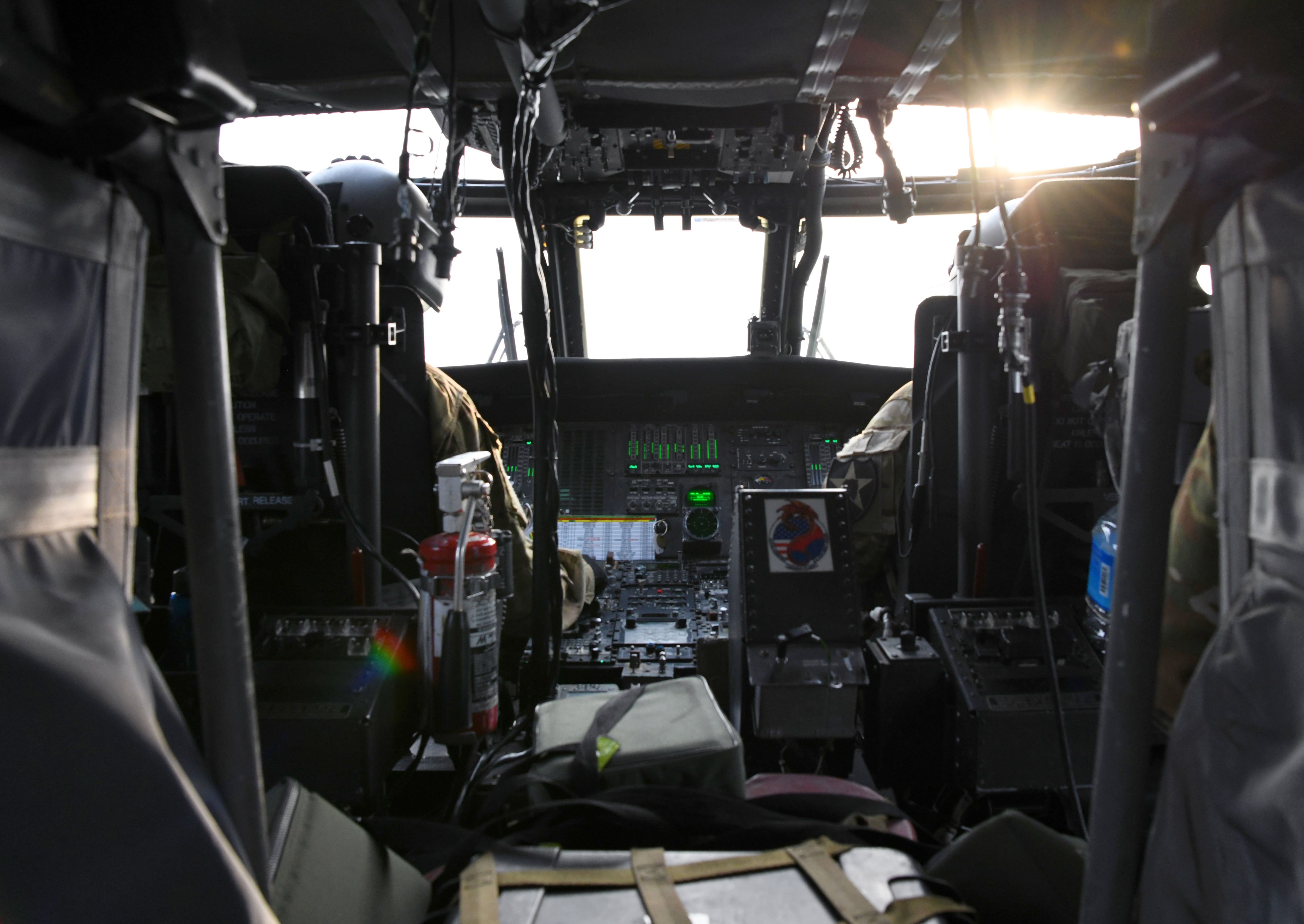
The venerable, battle-tested UH-60 Black Hawk helicopter is getting another in a series of technology upgrades that the Army hopes will keep it protected in coming years of potential near-peer fights.
Pilots with the Army’s Operational Test Command at Redstone Arsenal, Alabama, recently tested common infrared countermeasures, or CIRCM.
These CIRCM gives developers data that helps improve the common missile warning system and displays information on those threats on a new pilot vehicle interface, which saw improvements in testing last year, according to an Army release.
That information is critical as the Army envisions fighting in contested airspace like it hasn’t seen in decades. Those scenarios call for more sophisticated ways of detecting, and countering threats.
The infrared technology provides a more sophisticated way for pilots to have a larger vision bubble that surrounds their aircraft.
“Due to the evolving battlefield threats, the CIRCM comes at a pivotal time for Army aviation in order to improve the survivability of our crews that will be deploying in support of combat operations,” said Chief Warrant Officer 4 Toby Blackmon, a test officer with the command.
Blackmon further explained that the test were used to simulate actual operating environments.
To create the realistic threat environment, the Army’s Center for Countermeasures used a Multi-Spectral Sea and Land Target Simulator (MSALTS) to challenge aircrews as they conducted missions.
That was all an effort to force the test unit to react and employ tactics, techniques and procedures as if they were conducting combat operations, according to the release.
While the Army continues to upgrade and operate with the more than 40-year-old rotary wing aircraft, the service is also looking forward to the next asset it will need in future operations.
In April, Army officials posted a “sources sought” notice online laying out what they along with the Marines and Special Operations Command want from aircraft they expect fielded by 2030.
The program aims to replace the aging UH-60 Black Hawk helicopter fleet for soldiers and the newer UH-1Y Venom utility helicopter for Marines.
If successful in development, the new aircraft could fly faster, have a wider combat radius and cut medical evacuation times in half.
Maximum speeds for the Venom and Black Hawk now stand at about 180-190 miles per hour with a full payload. The Future Long Range Assault Aircraft is expected to fly at 265 to 322 mph.
The Army’s base requirements radically increase current performance and add range to their fleet.
An example from the posting was for self-deployment, basically stripped down to bare crew and equipment, which would allow pilots to travel between 2,000 and 2,800 miles one way.
That feature would have value anywhere but especially in the Indo-Pacific Command theater.
“The self-deployment mission represents standard long-range overwater planning for the longest segment of the shortest possible route across the Pacific Ocean, which is from Eareckson, AK (in the Aleutian Island chain) to Chitose, Japan,” according to the posting.
The medical evacuation goals hope to support the “golden hour” benchmark planners consider for casualty evacuations. Research shows that getting wounded troops to higher level care within an hour of injury increases their rate of survival.
That’s why they want the FLRAA to hit maximum air speeds of about 287 miles per hour, which allow aircraft to reach troops out to 100 miles in the golden hour.
Last year, the Army tested a digital control panel for the Black Hawk, a step away from the four-decade old analog panel, with pilots from the 82nd Combat Aviation Brigade out of Fort Bragg, North Carolina, Army Times reported.
At the time, officials expected to implement testing results into the aircraft by late 2019.
Pilots conducted a range of scenarios during the panel testing, which included: air movement, air assault, and external load missions under day, night, night-vision goggle, and simulated instrument meteorological modes of flight.
The test also used threat simulations to simulate the helicopter’s survivability and make pilots react using the updated capabilities.
Ground crews from the 82nd CAB hooked up sling loads during some of the missions, testing the new cockpit displays with an external load.
Todd South has written about crime, courts, government and the military for multiple publications since 2004 and was named a 2014 Pulitzer finalist for a co-written project on witness intimidation. Todd is a Marine veteran of the Iraq War.







